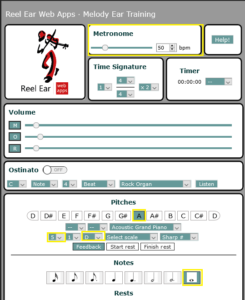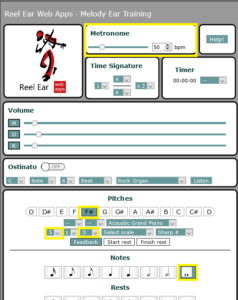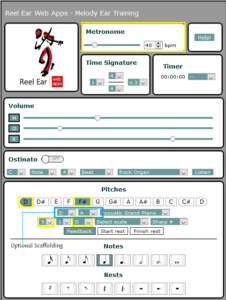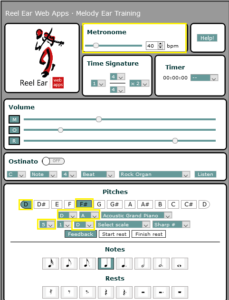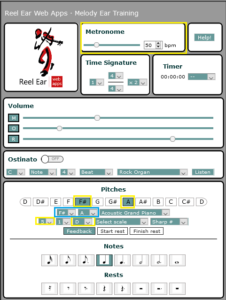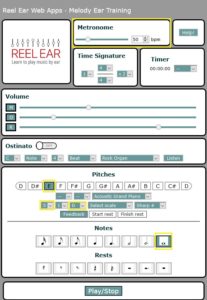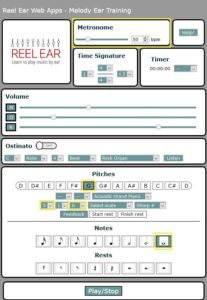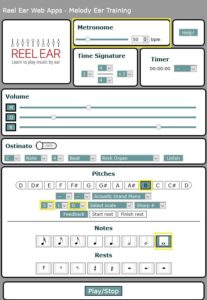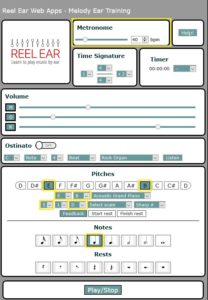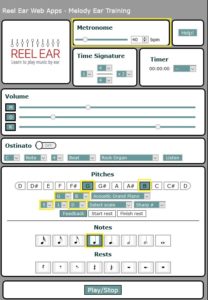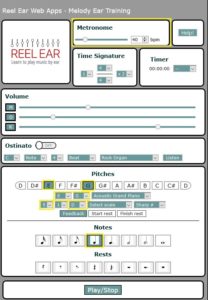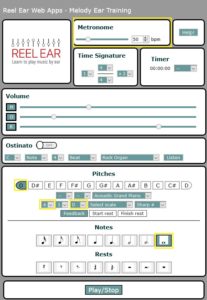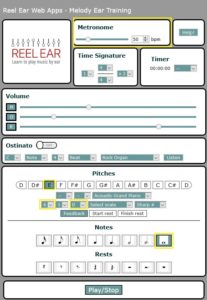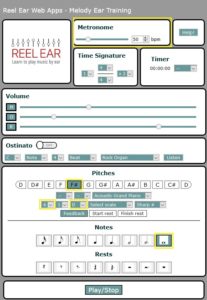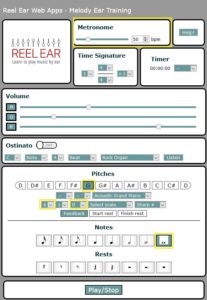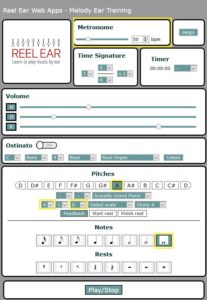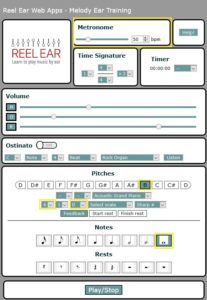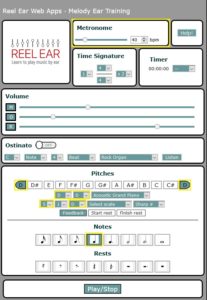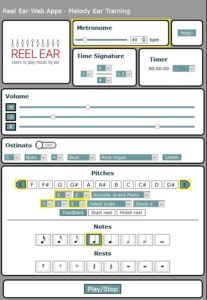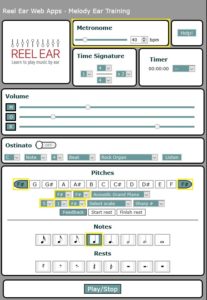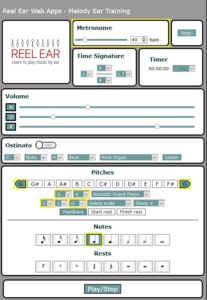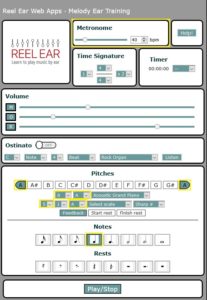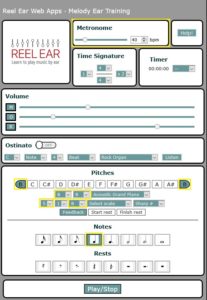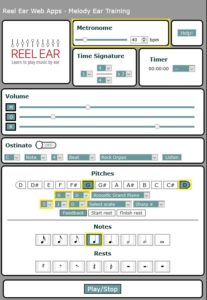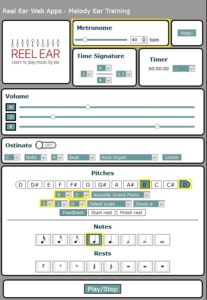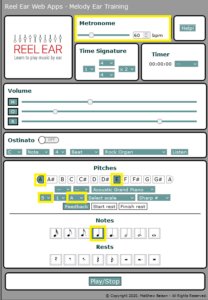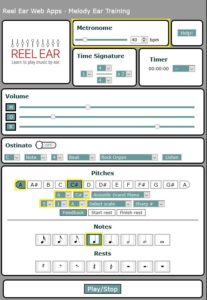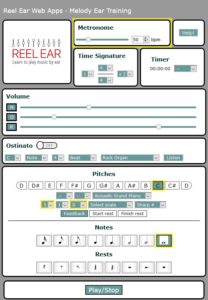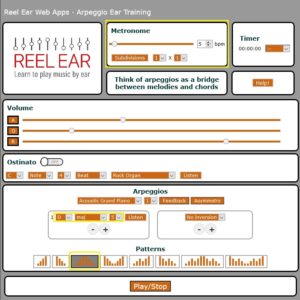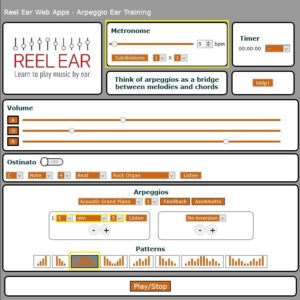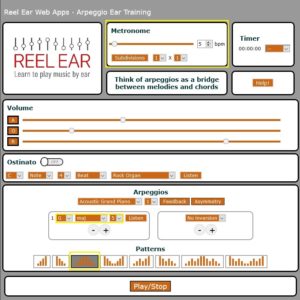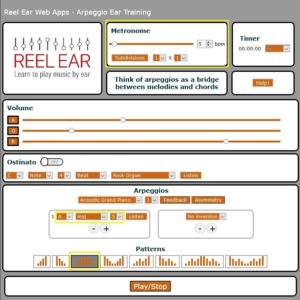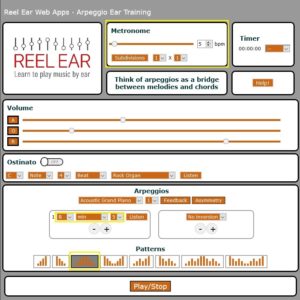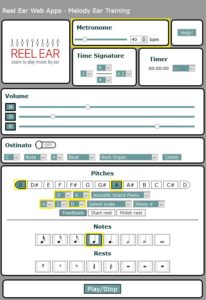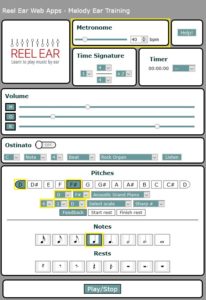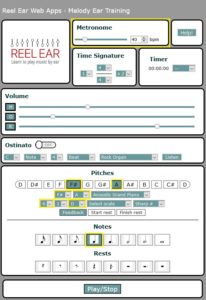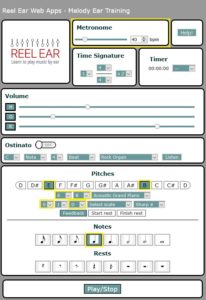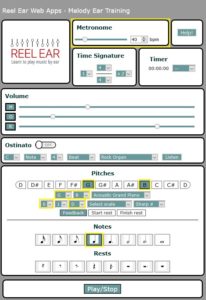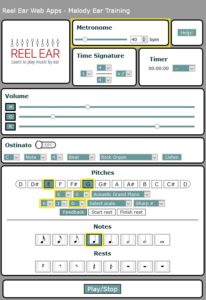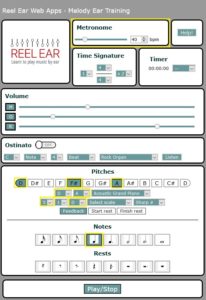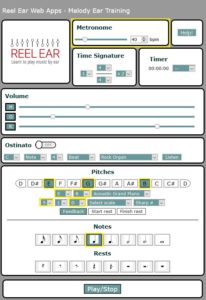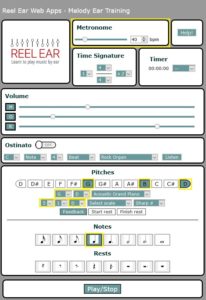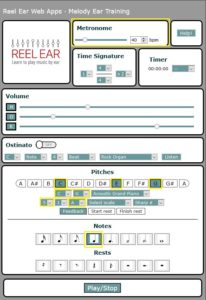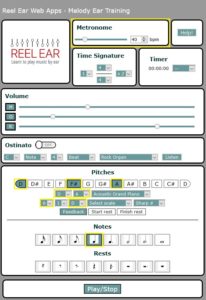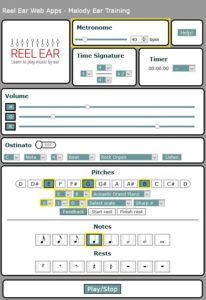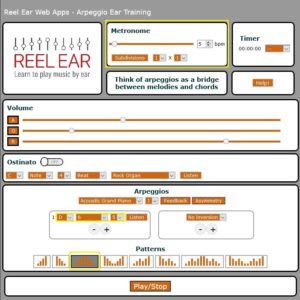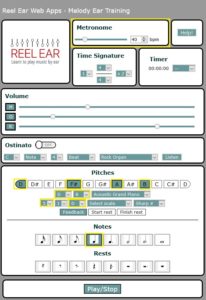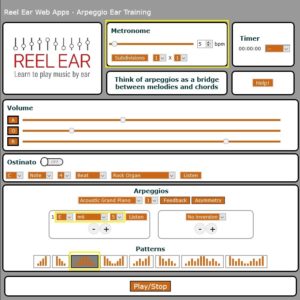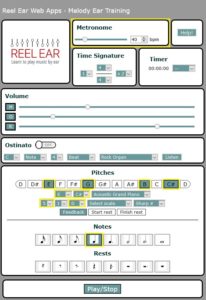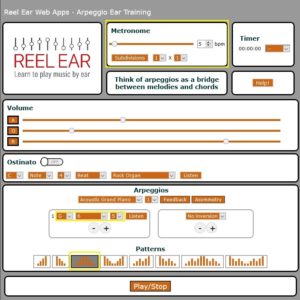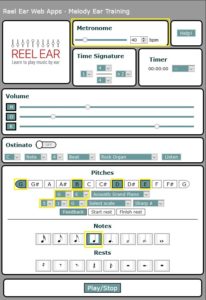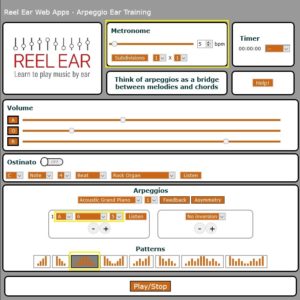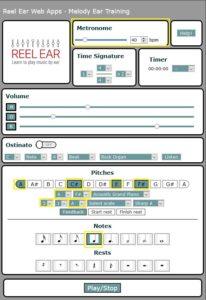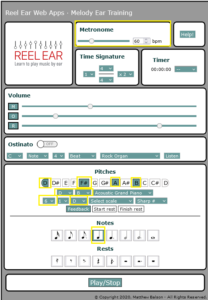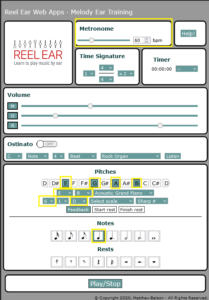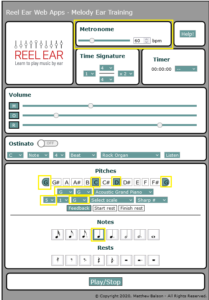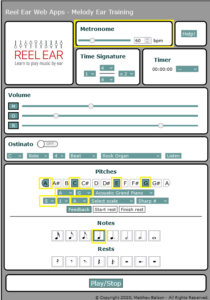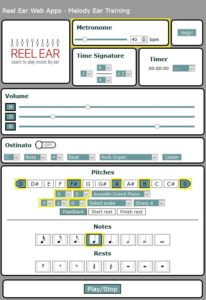Crucial Ear Training For Irish Tin Whistle
Welcome Tin Whistler
Welcome Tin Whistler!
I´m Mattie O´Boyle, the director of reelear.com, and I want to welcome you to this Crucial Ear Training for Tin Whistle course.
This course provides you all the tools that you need to train your ear so you can learn all your favorite songs and tunes on your own, without sheet music. Additionally, the course is designed as a tin whistle skill building method to help you build up your finger dexterity and your breath control, two important factors to playing the tin whistle well.
This course does not teach you all the different tin whistle techniques nor does it teach specific tunes. There are plenty of books and video tutorials that aim for those goals. The main focus here is ear training.
Everyone starts this journey from there own point of departure. Some folks have a pretty good ear quite naturally, while others, like myself, do not. The good news is that you can train your musical ear and go as far as you want with that training, up to easily learn all your favorite tunes by ear.
How do you do that? You´ll need to apply the same qualities to acquire these skills as with any other complex skill set: Persistence, patience, holding yourself to high standards and consolidating each step along the path before advancing to the next one. If you do that, I am sure that you will succeed. I have seen many, many students do so and there is no reason why you can not be one of them.
Remember, if you have any questions or technical problems, please contact me through the Contact Us web form and let me know. I am here to help.
You´ll need access to our web apps to follow this course, so if you have not already done so, please go here to sign up for your free 15 day trial.
Preliminary videos to familiarize yourself with the ear training apps
How to log in and open an app
Melody app overview
Number of repetitions
Musical gym
Scaffolding
How should I use the visual feedback?
One very successful strategy is to leave the repetitions at 2 and do the dictation in the following way:
• Listen to the new phrase, sing or play it back.
• Now, listen again and watch the visual feedback at the same time. This way you can correct yourself if need be.
• Finally, sing or play back the phrase again.
In other words, don’t look, then look, then don’t look. This takes a few minutes of practice. Once you can do your dictations perfectly, then stop looking all together and let your ear be your guide.
Step 1: Long Tones - low D
Before we get really get into ear training on the tin whistle, you should make sure that you can play a note cleanly. This requires you to pay close attention to three variables:
· finger placement over the holes
· mouth placement on the whistle
· breath control
Cover all the holes on the tin whistle and blow softly. You should a get a clean and constant sound. Most likely your tin whistle is in the key of D, so the note you are playing is a low D note.
Once you can get a full clean sound, on the low D note, you are really ready to start practicing your long tones. We are going to start practicing Long Tones with the low D, low F# and low A.
To play the low F# you need to cover the first four holes on your whistle, and to play the low A, you only cover the first two holes.
Watch the Long Tone screen cast to see how to set up the Melody Ear Training App for these long tones and how to do you first workout.
Step 2: Long Tones - low A
Now that you can play your low D well, let’s move on to the next long tone – the low A. You will need to cover the top two holes of your tin whistle to play this note.
The Melody app set up is almost identical to the last lesson, you only need to change the pitch from D to A.
Please see the attached screenshot for details.
Step 3: Long Tones - low F#
Now let’s play along tones on the low F#. You’ll need to cover the first 4 holes of your tin whistle – that’s counting down from your mouth towards the ground.
The Melody app set up is almost identical to the last lesson, you only need to change the pitch from A to F#.
Please see the attached screenshot for details.
Step 4: Melody Dictations (two notes at a time)
Now that you play your first notes well, we can start working on our ear training. The primary goal here is to begin to distinguish between different melody notes. Of course, in the background, we will be working on two other crucial aspects of playing the tin whistle – playing in time with the rhythm and gaining fluidity when changing between notes.
Our first melody dictation is low D and low A.
Scaffolding
Since Melody Dictations may be completely new for some folks, we can apply scaffolding to help transition into this new layer of musical complexity.
The scaffolding is always optional – use it when you need it, and turn it off as you improve. Remember, you have a scaffolding screencast here if you need to review what scaffolding is and how it can help you go further, faster.
If you do want to start out with scaffolding, then the low D is the predefined start note and low A is the predefined end note.
Melody App set up
Have a look at the screenshot to see the Melody App set up.
Remember, you have an Melody App overview screencast to get orientated about how to do the ear training work. It’s worth watching before jumping in!
Musical gym
Don’t forget to do your Musical gym, before moving on to the next step. We have the metronome set at 40bpm to start with, but you will want to work on speeding that up, so your pitch perception and your fingering become automatic.
Don’t know what musical gym is? Check out the screencast and then jump in….
Step 5: Melody Dictations (two notes at a time)
Are you ready for your next two note melody combination? We are going to use the low D and the low F#.
Remember the methodology:
· Use scaffolding if you need it
· Do your Musical Gym workout before moving on
· Hold yourself to high standards and don’t rush. Your laying a strong foundation and that can take time.
Have a look at the screenshot for the Melody App set up.
Step 5: Melody Dictations (two notes at a time)
Let’s keep rolling with melody dictations with low F# and low A. If you are using scaffolding, pay attention to the first note to sound – it changes to F#, the lowest note in the dictation.
Don’t forget to do Musical Gym with this combination, before moving on.
Step 5: Melody Dictations (two notes)
Now, we are going to use all three notes (D,F# and A) in a Melodic Dictation. Because adding extra layer of complexity can often pose a challenge, we are going to use some scaffolding to help make this transition from two notes to three notes easier.
Again, we will use scaffolding for the first dictations. Set D as the predefined start note and A as the predefined end note. That will make transiting into three notes easier. Once you can start doing the dictations effortlessly, remove the predefined end note. Finally, once you can do those dictations easily, then remove the predefined start note as well.
We are going to work on the following melodic dictations:
• E and B
• G and B
• E and G
As always, you can apply scaffolding to help transition into the new material.
Step 6: Long Tones In The Second Octave
Step 7 : Octave Jumps
Now it’s time to consolidate your breath control as well as fine tuning your ear to distinguish the same note in different octaves; it’s time for Octave Jumps.
These are two note dictations that use the low and high version of each note.
Important: Remember to change the Octave Setting in the Melody App to 5. Also, notice that you need to change the Reference Note for each example.
Use Scaffolding, if you need it.
Step 8: Melody Dictations (two notes in the high octave)
Now it´s time to get back to Melody Dictations, but this time we are going to use notes in both octaves.
• G and High D
• B and High D
• A and High E
Step 9: Introducing the C#
Here’s a new note, the C#. To play this one, just uncover all the holes on the tin whistle and blow until you get a steady tone.
Try using the C# with the low A in a two note melody dictation. Important: Change the Reference Note to A for this one.
Step 10: The last new note: C
It´s time to start training on the last note in the tin whistle´s first octave. As always we will start with long tones. We will be playing the new note, the C.
To play the C, cover the second and third holes of the tin whistle (counting from the mouthpiece down), and uncover the other holes.
Try some long tones to make sure that you are getting a clean sound.
Step 11: Arpeggio Workout #1
What’s an arpeggio? When we play notes consecutively, we call that sound a melody, when we play notes simultaneously, we call that sound a chord; wen we take the notes of a chord and lay them out into a consecutive patter, we call that an arpeggio.
We are going to use arpeggios to familiarize our ears, our breath control and our finger dexterity with certain note combinations that come up frequently in Irish music. Outside of this Ear Training course, you can also use arpeggios in many other creative ways to improve your ear, you instrument skills, and you composition and improvisation skills.
Now it is time to move over to the Arpeggio Ear Training App.Have you watched the quick overview video for the Arpeggio Ear Training App? If not, check it out, it will help you use the app more easily.
We are going to start our first Arpeggio Workout with the D major chord, whose notes are D, F#, A and high D. Once you set up the app and hit Play, you´ll hear an up and down pattern of the D major Arpeggio. You just play back what you hear.
Then, we’ll move on to: E minor, G major, A major and B minor.
Important: The Metronome in this app works differently than in the other apps, so remember to change it to 5 for these exercises. If not, they will be too hard for many folks.
Also, if you see a pop up that says “Allow Asymmetry”, you can click “yes” and continue setting up the app as you see in the screenshots.
Step 12: Two Note Dictations In The Second Octave
Let’s go back to the Melody Ear Training App now. Make sure you set these dictations up in the 6th Octave.
These melody dictations should sound familiar to you, but they will be in the higher octave. Remember you are working on your breath control and tone as well as your musical ear.
Step 13: Three Note Melody Dictations Low Octave
Step 14: Three Note Melody Dictations High Octave
Let’s jump up now to the second octave for some more three note melody dictation. Important: Remember to change the Octave setting in the Melody Ear Training App to 6.
Step 15: Arpeggio Workout #2 - The D6 chord
Step 16: Four Note Melody Dictations (D, F#, A and B)
It’s time to move into a more advanced area of ear training – four note melody dictations. Here is D, F#, A and High D.
Take you time and don’t be afraid to use some scaffolding as you get used to working with this new layer of complexity.
Step 23: More Four Note Melody Dictations (Second Octave)
Now let’s focus on the higher octave and play a series of four note melody dictations. We’ll do D, F#, A and B and then E, G, A and B. Important: Remember to set the Octave in the Melody App to 6 so you hear the dictations in the higher octave on the Tin Whistle.
Step 24: Four Note Melody Dictations with C
Let’s work on the C note now.
Here is what we are going to do:
• G, C, High D and High G
• A, C, High E and High G
Important: You will need to change the Reference Notes in the Melody Ear Training App to set these dictations up correctly. Use “G” as the reference note for the first dictation and “A” as the reference note for the second one.
Step 25: Five Note Melody Dictations
We are really going to go deep now. It’s time for five note melody dictations. As always, take your time and use scaffolding when you start a new layer of complexity.
Important: Pay attention to the Reference Notes and Octave settings in the screenshots. Here is what we are going to do:
• D, F#, A, B and High D
• E, G, B, C# and High E
• G, B, High D, High E and High G
• A, C#, High E, High F# and High A
• High D, High E, High F#, High A and High B
• G, C, High D, High E and High G
Congratulations!
Congratulations! If you have been working diligently through the entire course material and you have been holding yourself to high standards, I am confident at this point that you can play the Tin Whistle well and learn your favorite tunes by ear. You will have gained musical freedom and have prepared yourself to contribute positively to any band or jam session.
Do you want to go farther with your ear training and tin whistle skill building?
Here are a few suggestions:
• Work on your dictation speed. Go back to any exercise and try increasing the speed by 3 beats per minute. Once you can handle the new speed effortlessly, then raise the metronome 3 beats per minute more.
• Try different combinations of notes. Get creative.
• Try different rhythmic patterns or longer phrases
Best of luck on your Tin Whistle journey and stay in touch.
-Mattie O´Boyle
